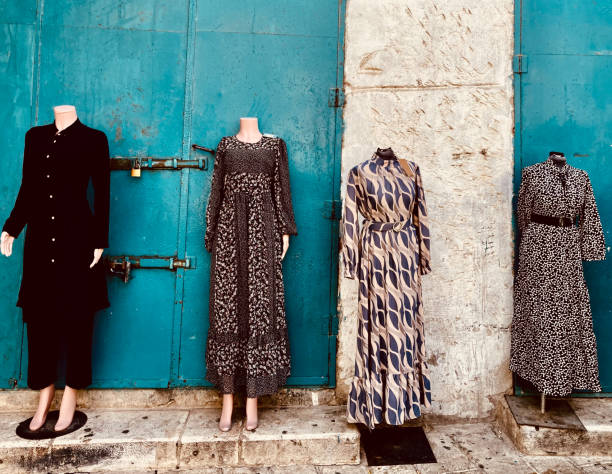When fashion said no to shahtoosh
The shahtoosh was a great example of how fashion and biodiversity can work together. The fashion industry was equally concerned about saving an endangered species as they were about saving the species. Subir Ghosh tells a story from the ringside about one of history’s best kept secrets.
The shahtoosh was a great example of how fashion and biodiversity can work together. The fashion industry was on the front line to save an endangered species from extinction.
The secret was one of the most well-kept in the world. It spanned seemingly disparate fields such as wildlife crime, fine artisanship, illegal trade, and high fashion. A wildlife scientist connected the dots and solved the mystery. This was the first time conservationists and enforcement officials had ever seen such a thing.
George Schaller was the scientist, a biologist who is known for his pioneering work on the Qinghai plateau. In 1993, Schaller came across the carcasses of Tibetan antelopes, or chiru. The carcasses were skinned, and the skin and fur of the animals had been removed. These animals were not killed for their meat. Schaller did not have to think long before he realized that the antelopes were being killed just for their fur. He discovered that the fur was being shipped to India via Nepal. He gathered a lot of photographic evidence, from bales and nomads transporting them by yak. He contacted Indian conservationists and urged them to do more research.
Schaller believed that the chiru would be killed to obtain their fur, which was then woven into the shahtoosh handcrafted shawls in Kashmir Valley. The shocking findings were met by utter disbelief and shock. Nobody knew, until that time, that the shahtoosh was made after an animal had been killed, and that species too, the chiru.
Schaller estimated that there were 65,000-72,500 wild individuals left at the time. This was down from the 1,000,000 animals at the turn-of-the century. According to Chinese enforcement officials around 20,000 chiru are slaughtered each year, mostly for the shahtoosh scarf. To make one shawl, 4-5 chiru would be needed. It was estimated that if the rate of extinction continued, in another 4-5 year’s time, the antelopes would be extinct. Alarm bells rang.
The fight to save the chiru took place on three fronts. First, the poaching had to be stopped. Second, the policies in various geographies were changed. Third, a campaign was developed to make shahtoosh unattractive to buyers. The task could not have seemed more challenging. The animal was killed in Tibet/China and the transit route went through Nepal. The shawl, a family heirloom, was woven in Kashmir. And the largest buyers were found on the high-end streets of the West. The campaign had to be international, and luxury fashion played a role as well as wildlife crime.
The animal, the shawl and the crime
It was important to know where to begin. The shahtoosh Kashmir shawl was at the front. The modern shawl-weaving began in Kashmir in the 15th Century, when Zainul-Abidin brought back from Turkestan very skilled weavers. Literature, on the other hand, gives a different time. Kshemendra a medieval Kashmiri writer, said that shawl weaving was already a cottage business in the 11 thcentury Kashmir. The best quality shawl was the one tus.
The tus-shawl is mentioned in the Ain-i-Akbari, a court historian Abul Fazl’s account of Akbar’s reign. The manuscript contains a chilling description. “His Majesty upgraded the (shawls) department in four different ways.” The first can be seen in the tus-shawls. They are made from wool of an animal that is naturally black, white and red. Sometimes, the color is pure white. This shawl is known for its warmth, softness and lightness. It is usually worn without changing its colour. His Majesty dyed it. “It is strange that it won’t take a dye in red”. The so-called “tus shawl” was made of hair from the tus goat. Other historical references, and many later, were all lost to time until Schaller’s discoveries sent a wave of new research into the mystery surrounding the shahtoosh.
The shahtoosh market was at its height in 1993. It had been booming since the 1970s. There were many myths about the origins of the shahtoosh. The traders would claim that the wool was either from domestic goats shorn, or feathers of some mythical bird. Or, they could simply have gathered tufts on rocks and bushes. In a 1980s brochure, the Kashmir government claimed that the wool came from the ibex, a wild goat species that lives in the European Alps mountains.
Science can easily dispel myths that are spread by word-of-mouth. Knowing the animal was the key to understanding the garment which was both coveted and costly.
The Tibetan antelope is classified as a medium-sized animal similar to a deer, but it’s more closely related with goats and sheep in the subfamily Caprinae. The Tibetan antelope is the only large mammal that is native to the Qinghai/Tibet Plateau and a keystone of the Chang Tang Ecosystem. It looks frail, but is one of the most hardy animals on the planet. It can survive temperatures as low -40oC. The presence of a thick layer of fine, dense wool near the skin helps it survive such a brutal climate. The chiru is endemic to Qinghai and Tibet, but its range extends into Ladakh (north-west India) in a small area. The chiru are found mostly at elevations over 4,500 meters and even up to 5,500 metres.
The chiru, a migratory mammal, travels vast distances between May and July. Males and females follow completely different routes. Females give birth in traditional birthing sites. These summer calving areas were little known until 1998, when antipoaching teams visited the area.
Males have black horns that are slightly curved and slim (females do not). The coat colour of adult males changes from summer to winter. The coat of the adult male is a reddish-fawn colour with brown and light grey tones. This changes into white at the underside. Winter brings a lighter grey with tan tones and white. The underside turns white from the chin down to the belly. The female has a fawn color, almost pink. Her rusty brown nape blends with the white underside. The young are the same color as the female. The description is very similar to those found in Ain-i-Akbari.
Myths were dispelled one by one. The hair and wool from each species of animal differ structurally. A microscopic analysis of the Tibetan antelope hair and the fibres from the shahtoosh scarf was matched to confirm the smallest evidence. The chiru’s wool cannot be combed or sheared like the sheep or goat’s; it must be removed with the skin. It would therefore be necessary to kill an animal in order to get its wool. Nomads and herders could not collect the wool from rocks and bushes as claimed.
The Shawl that became the Shroud
The conservation movement took some time to develop. As the evidence was gathered, both in terms of scientific documentation and unravelling crime/trade routes there were many organisations who played key roles, often complementary. The first two organisations were TRAFFIC India, the Wildlife Protection Society of India(WPSI), and then the Wildlife Trust of India(WTI). WTI worked with the International Fund for Animal Welfare to fight the shahtoosh on an international scale. The shahtoosh could fetch as much as $20,000.
The shahtoosh was highly sought after in the 1980s. The shahtoosh was praised by top designers, it featured in the Valentino show and an article in the British edition Vogue. The IFAW/WTI Campaign devoted a lot of its efforts to designers since fashion was the driving force behind international demand. They began with the publication in February 2000 of a first report called Wrap up the Trade. Fashion designers began to contribute during the London Fashion Week in September 2000. Launched in June 2001, the global report is a compilation of all fashion designers’ contributions.
Parallel enforcement efforts were also conducted. In 1997, the Metropolitan Police Wildlife Crime Unit raided an Indian company’s premises in Mayfair, London, and seized 138 Shawls worth 353,000. The shahtoosh name became more and more stigmatized as seizures were made around the world, especially in the UK. This helped because it was a backdrop to the glitzy event: no one wanted any association with shahtoosh.
The fashion week circuit in India was just beginning. WTI managed to enlist the Fashion Design Council of India to help raise awareness. Ritu Kumar was at the forefront of this campaign. The campaign was a hit with designers, who joined in large numbers (2000-02). In terms of the media coverage, the support from the design community has been significant.
The anti-shahtoosh campaigns ended, and the Tibetan antelope population has increased. In 2016, the Red List of International Union for Conservation of Nature and Natural Resources classified it as Near Threatened. It was previously classified as Vulnerable in 1996 and Endangered since 2000. Although the population has doubled, it is still not safe.
There are still sporadic reports about shawls being seized in various parts of the globe. There are occasional reports that some groups have tried to legalise shahtoosh trading, under the mistaken assumption that the Tibetan antelope could be farmed, and its wool could be shared as with sheep. The threat from the outside remains.
Many animals have been killed for clothing and luxury apparel, including reptiles, for their skin or hide, or even both.




0 Comments